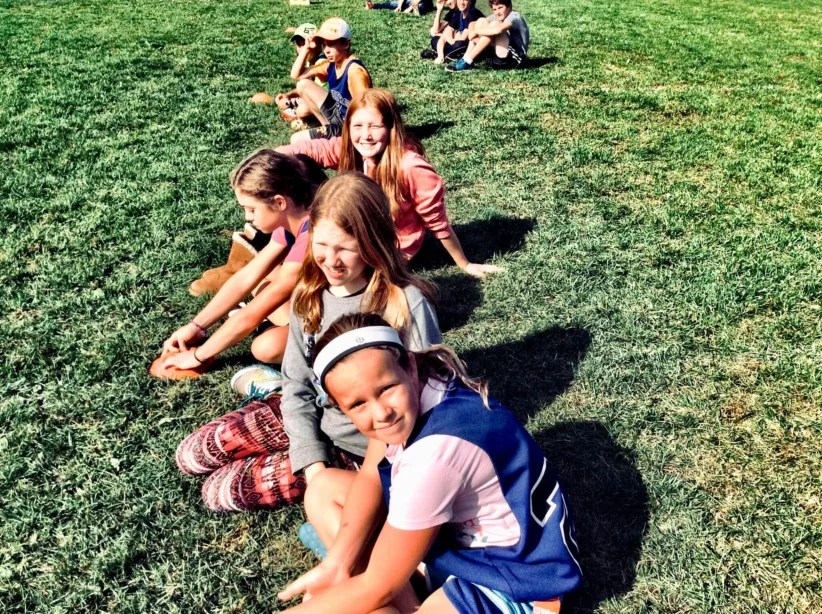Imagine this: Your five- or
six-year-old makes his bed and puts away his pajamas every morning. In the
evening he sets the table and feeds the dog. At the end of a play date, he
cleans up the mess that has spread across his room. And during the weekend, he
may even vacuum the living room.
Does having your child help
you around the house sound like an impossible dream? It isn’t. Really.
Parenting experts unanimously agree that five- and six-year-old kids could—and
should—be assigned regular chores.
“When kids are younger they
can only do partial chores and a parent almost always has to help them,” says
parent educator Susan Turben, Ph.D. “Five- and six-year-olds can do significant
chores, like vacuuming a room, and they can do the whole thing.”
“When children turn five
they are more focused and have a longer attention span than they had when they
were younger,” says Virginia Stowe, founder and director of the Parenting
Resource Center in New York City. “They are more adept with their hands and
have arrived at a good balance between what they would like to do and what they
are capable of doing so that completing chores will be less frustrating for
them.”
The benefits of having your
kids do chores have been well documented. Contributing to the running of the
household “helps children feel competent and that helps them develop a strong
sense of self esteem,” says Stowe. “It makes them have a sense of being
important within their family.”
Being responsible for
accomplishing tasks at home will also help your kids do better in school later
on. “Research shows that kids who don’t try as hard as they could in school are
more likely to have been raised in families where they didn’t have to do things
at home for their families,” says Stowe. “They believed someone would always
step in and do it for them.”
Another reason chores help
kids do better in school is because they “teach kids that sometimes they have
to do something even if they don’t want to and that translates into getting
homework done and completing assignments on time,” says Vicki Carr, director of
children’s programs at the University of Cincinnati’s Arlitt Child and Family
Research and Education Center.
Keep in mind that your
child’s chores should involve taking care of his or her room and belongings as
well as general household chores, like dusting or setting the table. The latter
“set the whole atmosphere for what the expectations are of being part of a
family. That helps create a ‘we’ vs. an ‘I’ environment,” says Carr.
Here’s how to get your
child started:
1. Make a list of all the
chores your child can do (see box). Then let him pick three or four that appeal
to him most. “We all like to have some choice in what we do,” says Stowe. “If
you let your kids choose the things they like best you will have more
cooperation.”
2. Do not link regular
chores to his allowance if he gets one. “Regular jobs around the house should
never be paid for,” says Turben. “They should be considered part of living in a
home.”
“The best way to motivate
your child is to tell him that by doing chores he is saving you time, so that
you’ll have more time to do something fun with him, such as play a game or
read,” says Stowe. “Time spent together ought to be the reward.”
3. Rather than telling your
child he did a good or bad job, describe exactly what your child accomplished,
says Stowe.
She recommends saying
something like, “You put everything in the right spot and the napkins are
folded well.”
Of course, getting your kids
to take on regular responsibilities may not be all smooth sailing.
Here are the
most common hurdles parents face and how to handle them. You know you’ve hit a
rough spot when your kids say:
1. “Mommy, you have to help
me.”
If your child refuses to
clean up her room or set the table unless you’re right there doing it with her,
she may just want to spend more time with you, says Stowe. Or she may be afraid
she won’t do it right.
So make sure you’ve taught
your child the skills she needs to do her chores—that she can easily open and
close the boxes her toys get stored in, for instance, or that she knows exactly
where to put the dishes when she carries them into the kitchen.
Of course, there’s nothing
wrong with doing some chores together since that can be a nice way to spend
oneon-one time together and get things done. The Kimberly family devotes every
Saturday morning to chores. And while their two older kids do their chores on
their own, five-year-old Hannah prefers to clean the bathroom mirrors while her
mother does the sinks. “Frankly it’s a lot more fun for her if we do it
together,” says her mom, Elizabeth. “She needs that motivation and partnership.
But every day she makes her bed and sets the table by herself, too.”
“You may have to wean your
child away from doing her chores with you,” Stowe recommends. “Say, ‘For now
you need to have me here. In a couple of weeks we’ll try it with me in the
other room and you’ll call me if you get stuck. And don’t worry, we’ll have
time together for other things.’ That way they’re reassured they’re not losing
out on time spent with you.”
2. “I’m too busy” or “I
don’t feel like it.” That’s what fiveyear-old Mallory Merryman says every time
her mother, Betsy Jordan, asks her to help with the laundry or clean up her
room.
In this situation it’s best
to empathize with your child and say, “I know you don’t feel like it but the
job has to be done anyway,” says Carr. “If you don’t acknowledge their feelings
they’ll tend to get into a power struggle with you and yell things like, ‘I’m
not going to do it,’ or ‘Nobody understands me,’ or ‘I hate this.’” If they
still won’t do it, “give them consequences related to the chore,” says Stowe.
“If they don’t put their clothes in the hamper they won’t get washed. If they
don’t put their toys away they won’t be allowed to play with them the next
day.”
3. “I forgot.” “Up until
the age of 8 or 9 kids have to be reminded constantly of most things,” says
Turben.
She recommends posting a
chart with pictures of what they have to do on the refrigerator or on their
bedroom door.
Even with a chart, it’s
still perfectly normal for kids to forget every so often. It’s not a reason to
give up and do it yourself, even though it may be faster and easier if you did.
In the long run it’s better
for your children—and you—if you just remind them whenever they need reminding and
then get out of there and let them do their own thing, says Turben. “Help them
only if they really, really need it.”
This story originally
ran in the June 2006 issue of New York Family.
What Your Child
Can Do Around the House
(Beginning At
Five or Six)
Everyday
chores
• Set the table
• Feed the dog
or cat
• Place dirty
clothes in the hamper
• Make their
beds
• Put away
their shoes and clean clothes
• Scrape food
off the plates and into the garbage
• Put the
dishes in the dishwasher
• Empty the
bathroom garbage into a larger garbage can
• Put their
books and toys away
• Separate the
recyclables
Once a week
chores
• Sweep up or
vacuum in one or two rooms
• Water some plants
• Help sort and
fold the laundry
• Help clean
their room
• Stack all the
magazines and newspapers for recycling





















